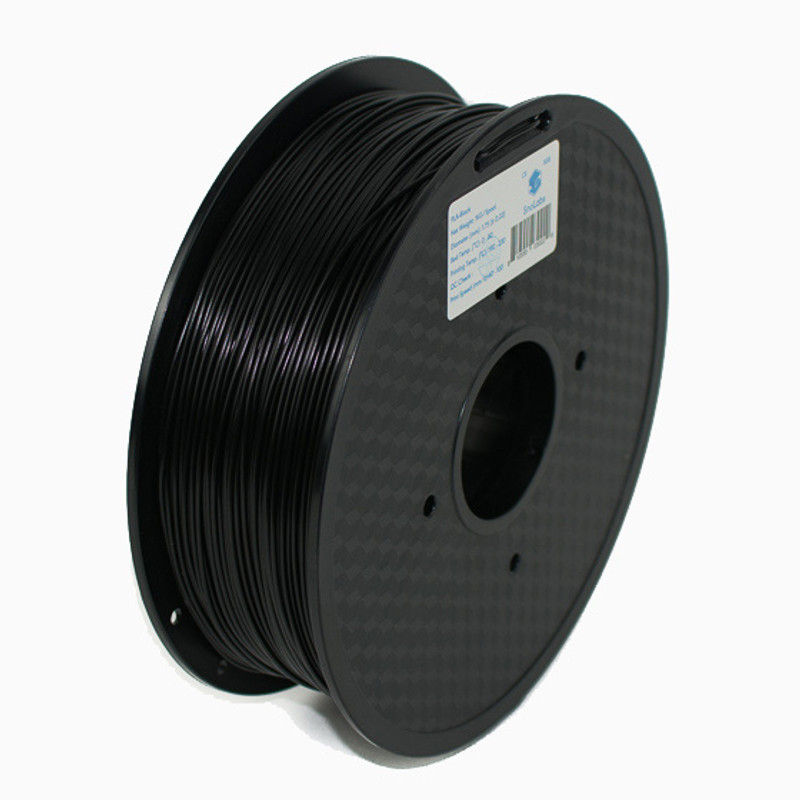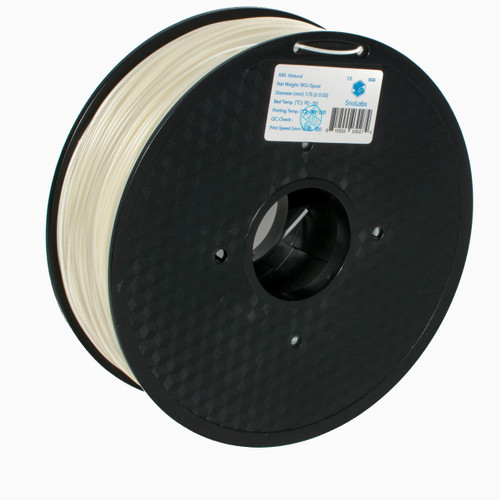Description
Color Description
A sweet shiny jet black.
ABS (Acrylonitrile Butadiene Styrene)
ABS is another popular filament used for 3D printing as it is a strong and versatile material. It is best used for creating durable parts that require higher heat resistance. You want to make sure your models are slightly larger than you usually would like as ABS will contract once cooled. ABS printed parts can be post-processed with acetone to give a glossy finish. It is ideally used for functional prototypes as ABS is the closest material to real production models. ABS can be used with both, 3D printers and 3D Pens.
Advantages
- Low shrinkage
- High strength and heat resistance
- Low warping
- Exceptionally durable
- Use Acetone for a polished finish.
Disadvantages
- Requires an enclosure for easier printing, as breezes will cause cracks
- For safety, have a method to filter the air as printing ABS releases toxins. At SnoLabs, we use a fan with a carbon filter on top of our enclosure.
Suggested settings:
| Print temp (°C) | 190 ~ 230 |
| Bed temp (°C) | 90 ~ 110 |
| Speed (mm/s) | 60 - 100 |
Other details
| Diameter Tolerance | ±0.03mm |
| Net Weight (kg) | 1 |
| Gross Weight (kg) | 1.5 |
| Full Length (1.75 mm) | 396 M |
Our print settings:
| Printer | UltiBots D300VS+ & UltiBots D300VS |
| Bed | Glass |
| Slicer | KISSlicer |
| 1st Layer Print Temp | 225°C |
| Print Temp | 220°C |
| Bed Temp (1st Layer) | 80°C |
| Bed Temp | 75°C |






